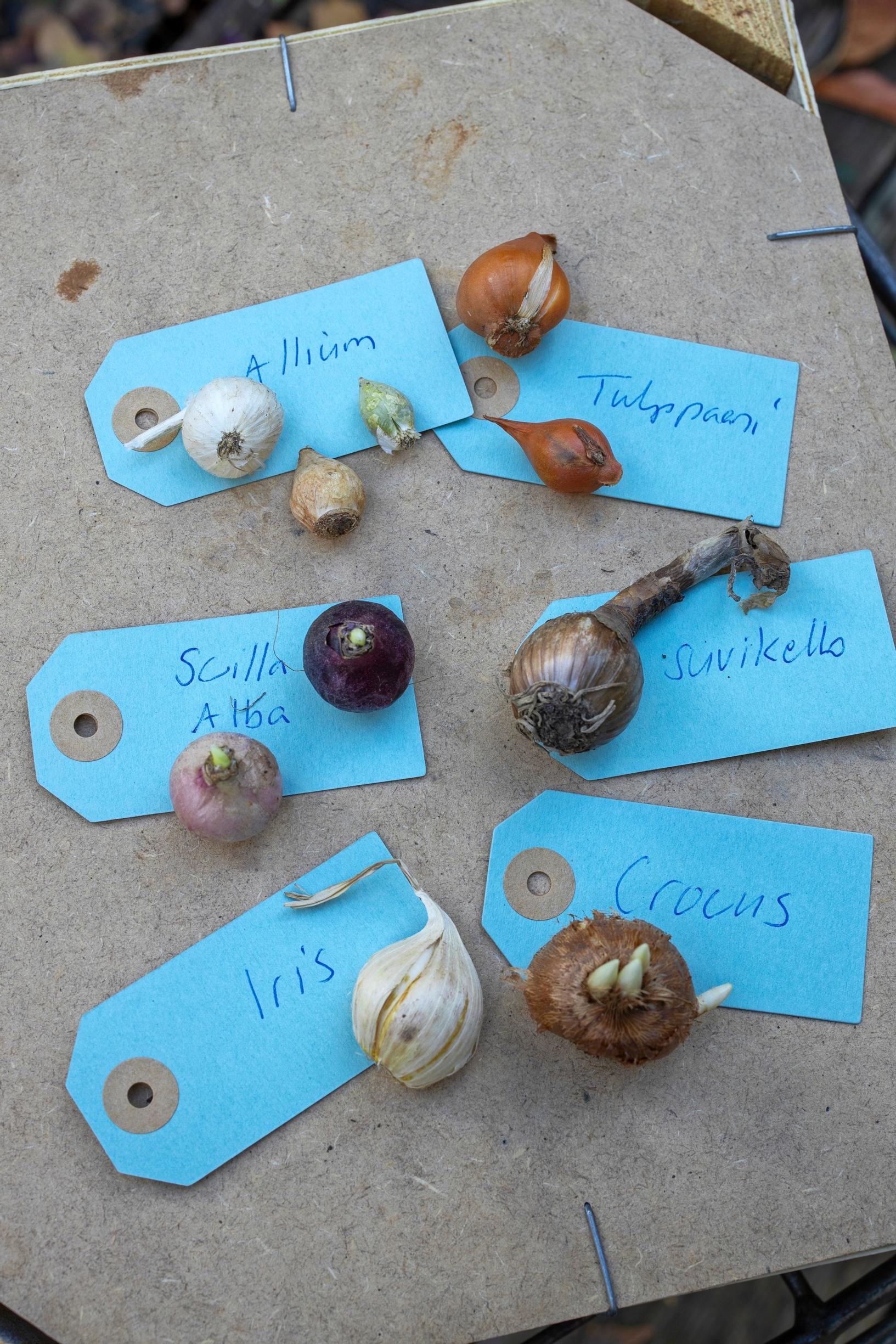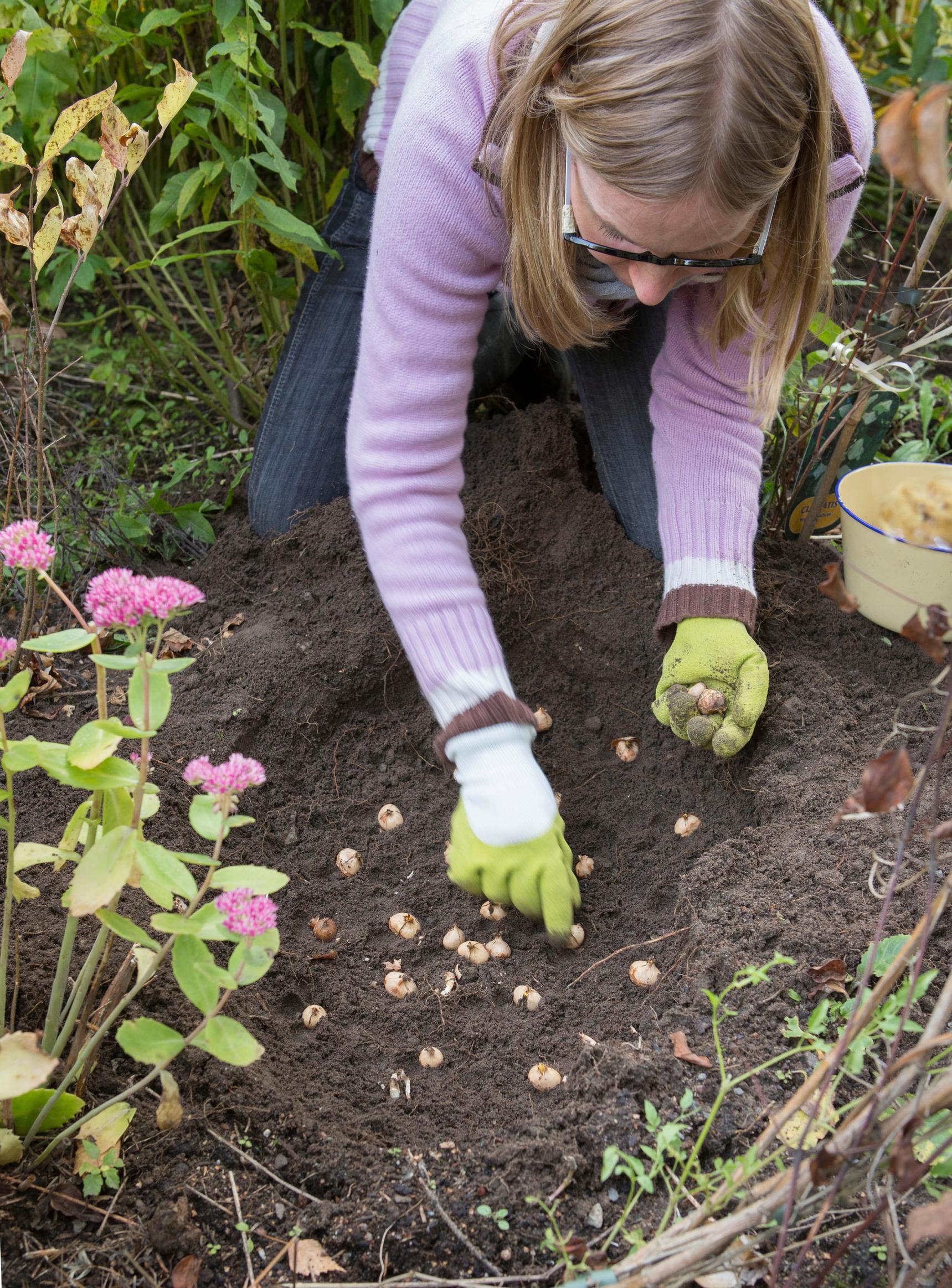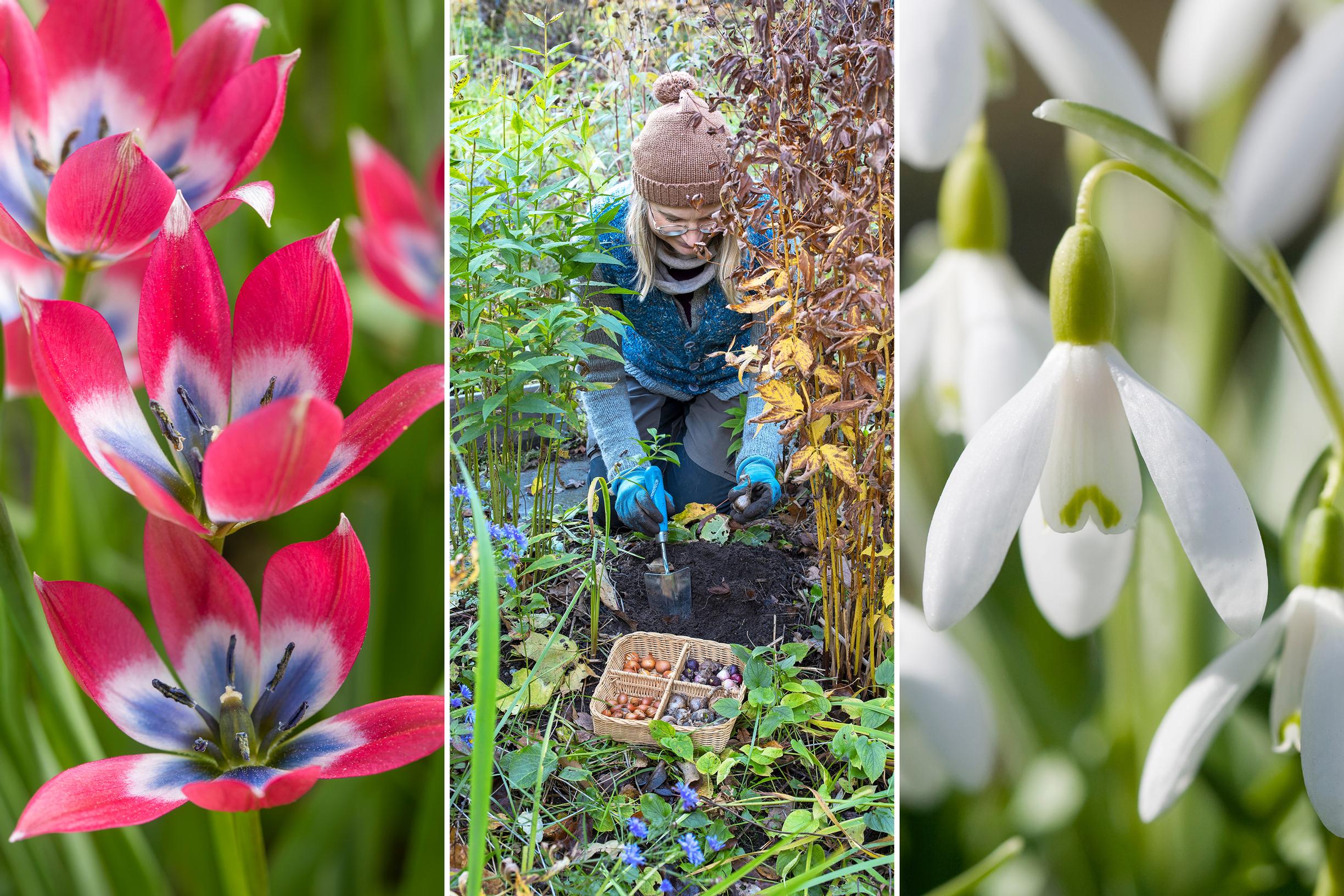
Dry or moist soil? Here’s how to plant bulbs in the right spot and at the right depth
In fall, it’s worth planting plenty of different flower bulbs and tubers for layered pops of color among perennial beds, around shrubs and trees, and in sparse lawns. Check out horticulturist Outi Tynys’s tips for planting.
A dry spot isn’t for everyone
When choosing bulbs and tubers for a perennial bed, keep the site conditions in mind. If you dream of lush clumps of snowdrops, plant them in slightly moist but well-draining soil—they won’t thrive in dry areas. Spring snowflake, winter aconite, daffodils, least gagea, corydalis, and striped squills also appreciate soil that doesn’t dry out completely in spring and summer.
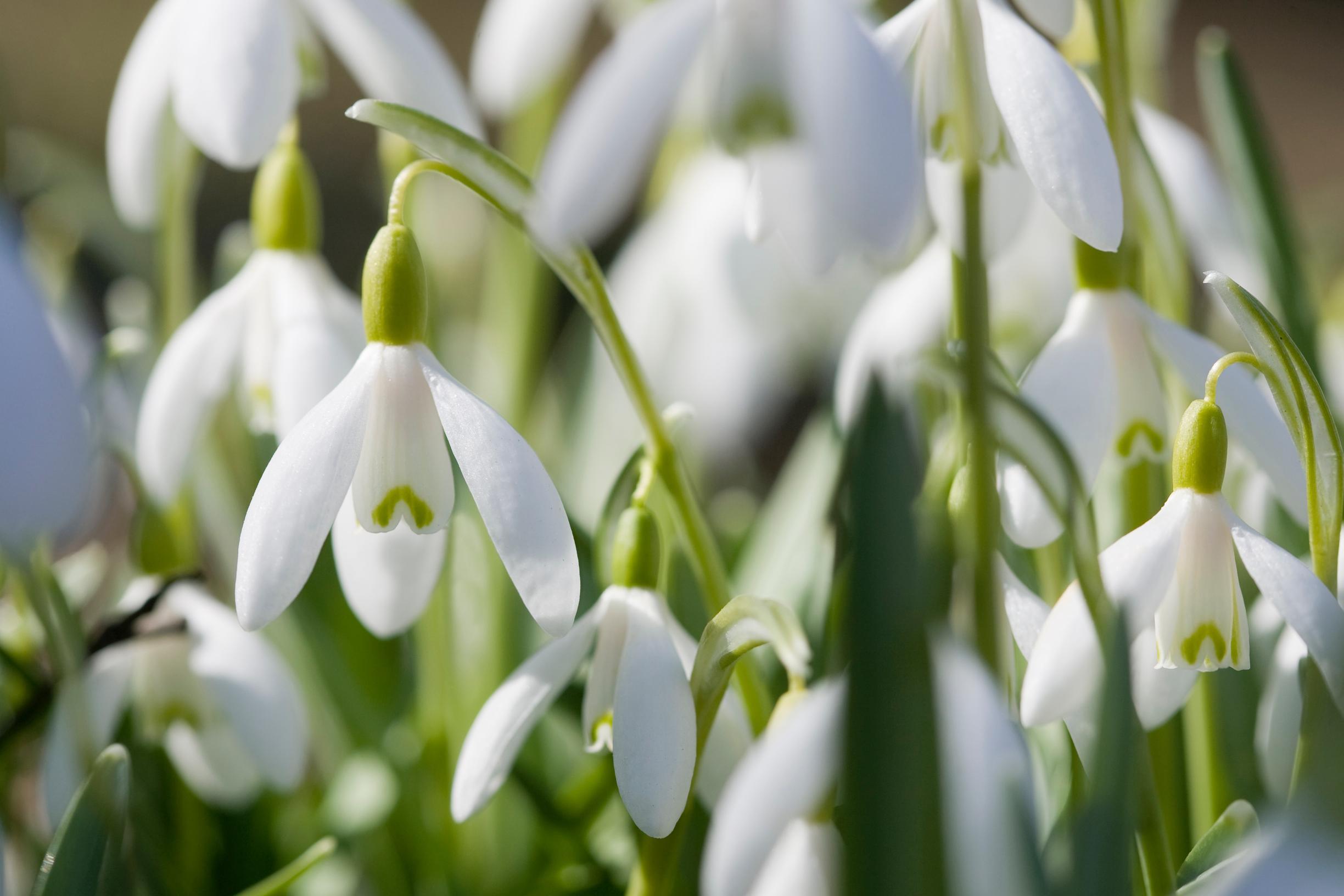
Species that benefit from a dry summer season suit a sunny, dry location or a rock garden. These include netted iris, pink lily leek, and small tulips. They thrive best in a bed that isn’t watered during the summer.
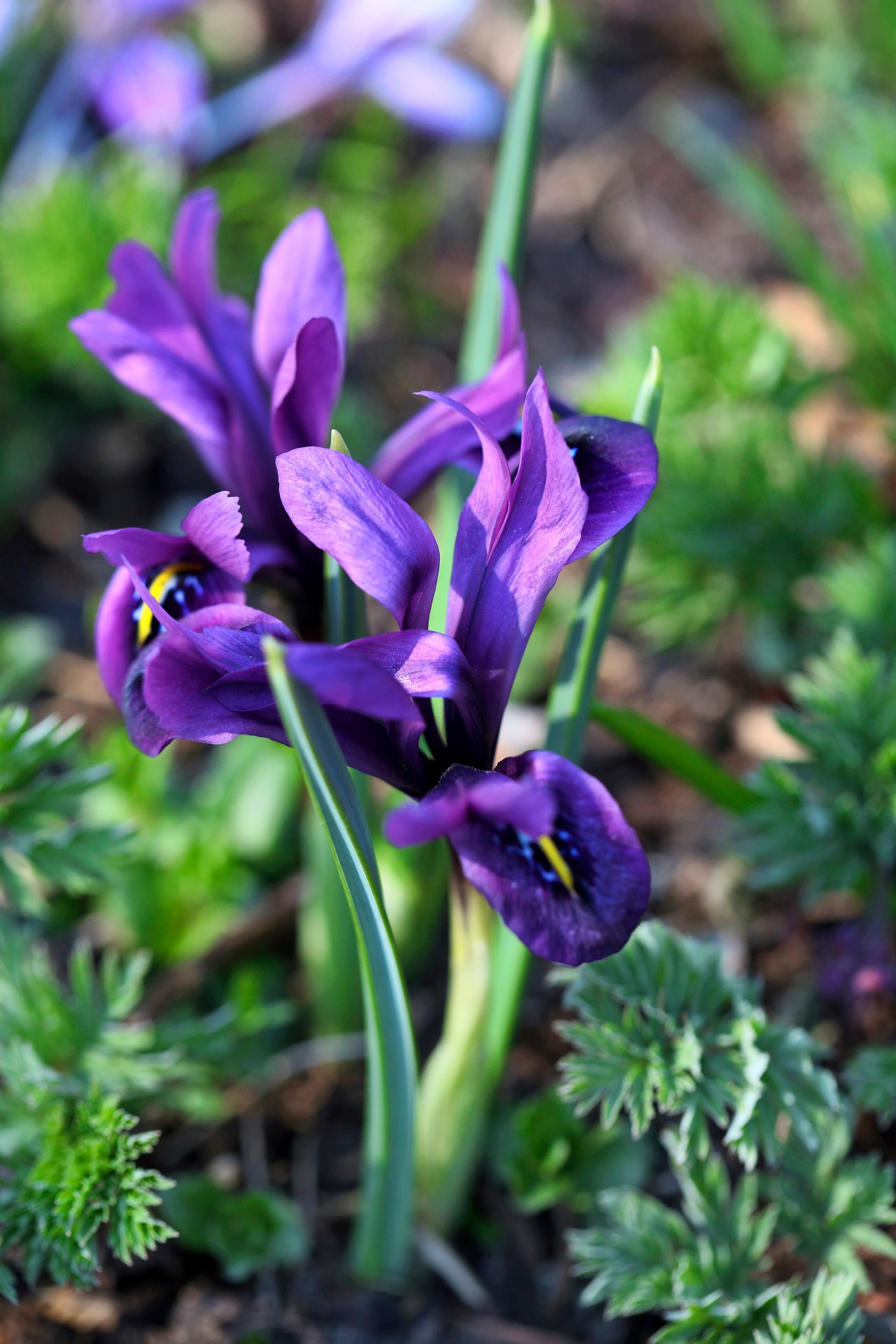
Many species bloom year after year with virtually no care when they’re in the right spot and multiply well. Saffrons, scillas, and winter aconites also help bumblebee queens and other early pollinators.
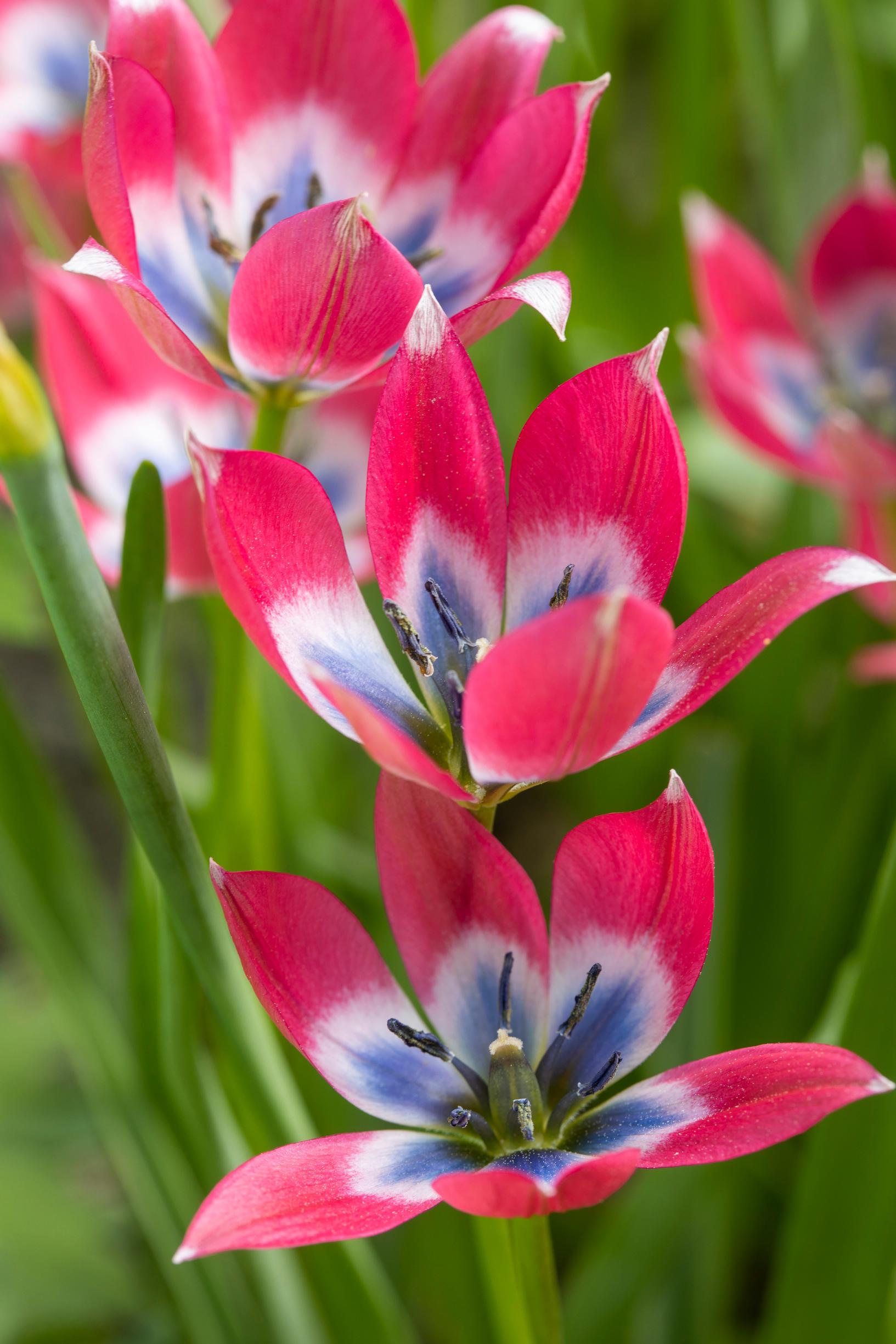
Bulb flowers under shrubs and trees
Under shrubs, tuber and bulb plants enjoy the light during flowering, but end up in partial shade once woody foliage appears. Good options for planting under shrubs include snowdrops, fumeworts, late tulips, scillas, and striped squills. They gradually spread via offsets and seeds.
For shrubs grown as standards, [in Finnish] it’s also possible to plant taller spring bloomers, such as alliums, wild tulips, and snake's head fritillary.
It’s wise to plant bulbs and tubers not only in freshly turned soil but also in the sparse lawn under shrubs. Mow it only in summer, after the spring bloomers’ foliage has withered.
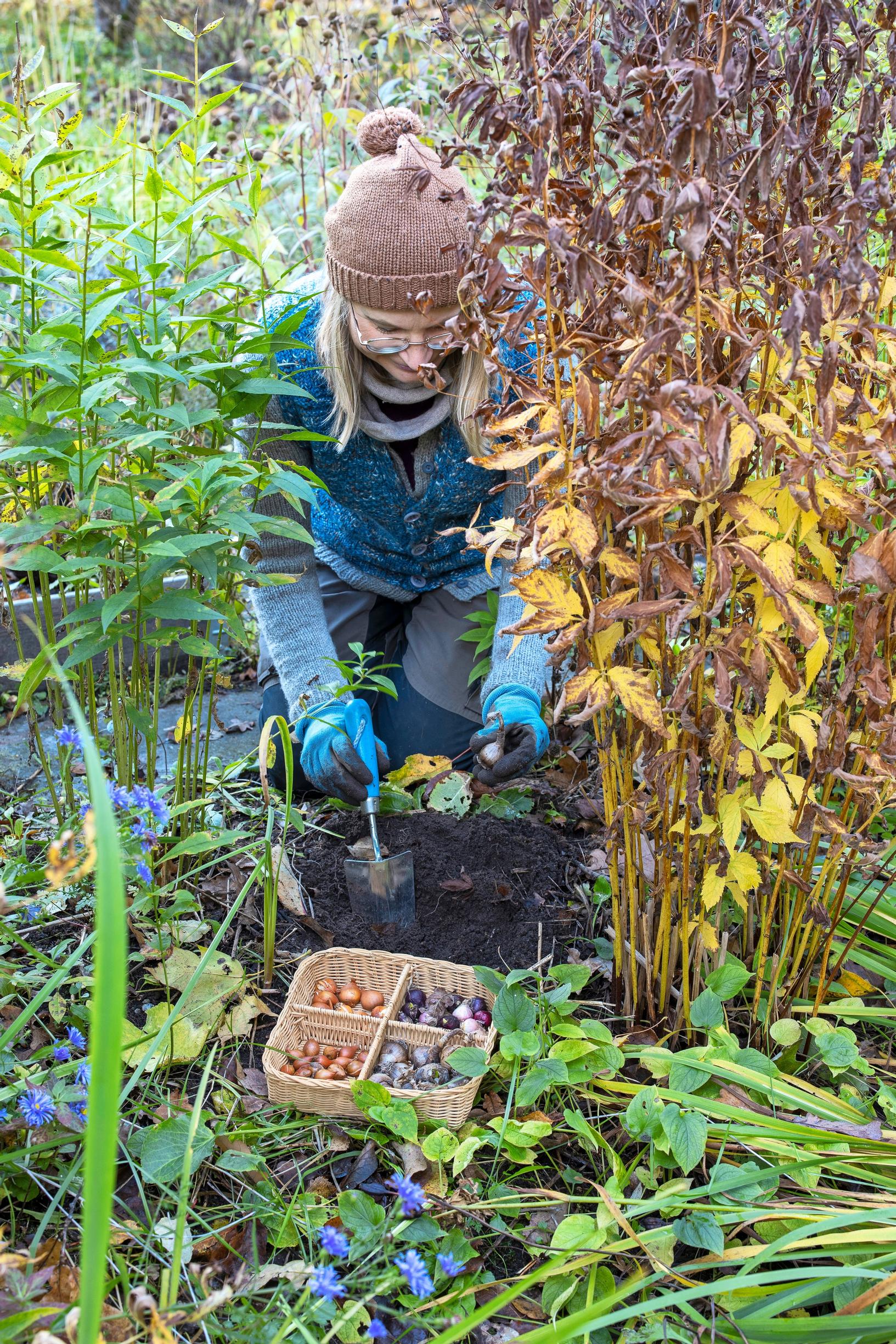
Plant at the correct depth
1. Familiarize yourself with species-specific planting instructions, especially if you’re trying new spring bloomers. As a rule, bury bulbs and tubers three to four times their height, but note exceptions. For example, even though netted iris bulbs are small, plant them about 15 centimeters (6 in) deep.e
2. If your soil is sandy, you can plant bulbs slightly deeper than you would in dense clay soil. Planting too close to the surface exposes them to frost, while planting too deep reduces propagation and delays flowering.
